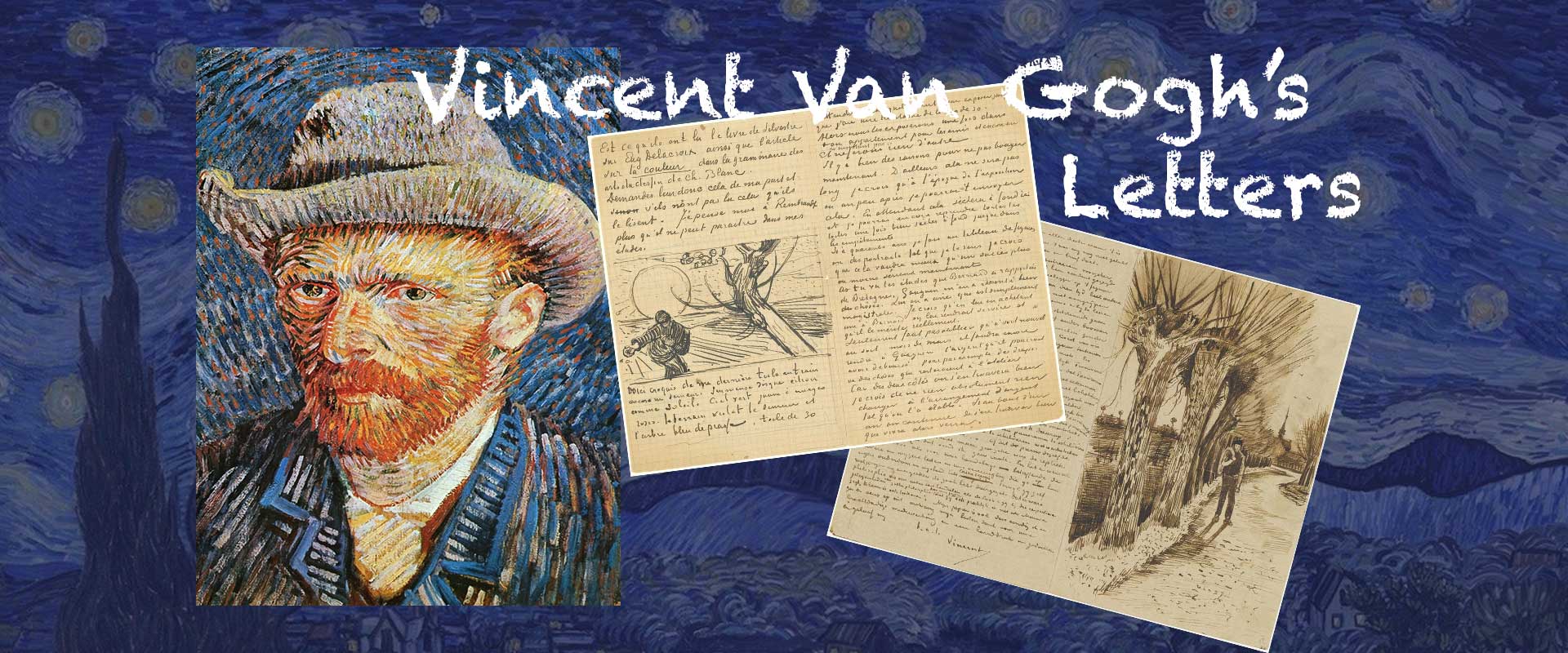Vincent van Gogh is known for his swirling skies, bold color, and intense emotional expression. But beyond the canvas lies a deeper story—one told not in brushstrokes, but in ink. Van Gogh wrote over 900 letters in his lifetime, many addressed to his brother Theo. These letters are more than correspondence; they are windows into his mind, revealing the soul of an artist both tormented and inspired. What do these personal writings teach us about the man behind the art?
A Lifeline to Theo: The Heart of Vincent’s Letters
Van Gogh’s bond with his younger brother Theo was one of the most important relationships in his life. The two exchanged hundreds of letters over nearly two decades, sharing everything from health updates and financial struggles to philosophical reflections and artistic critique. For Vincent, these letters were not just communication—they were therapy. Theo’s financial and emotional support allowed Van Gogh to continue painting, and the act of writing helped him process his thoughts.
In many letters, Van Gogh opens up about his mental illness, loneliness, and longing for connection. Yet, he also shares excitement for his latest paintings, admiration for nature, and his pursuit of artistic truth. These contradictions—pain and beauty, despair and determination—are what make his letters so moving.
Artistic Vision in His Own Words
Van Gogh’s letters are filled with insight into his creative process. He often described the colors he used, the landscapes he painted, and the symbolism behind his work. For instance, he once wrote about painting sunflowers to bring brightness into the lives of others, even while struggling with depression himself. His words provide a clearer understanding of his choices as an artist: why he painted cypress trees reaching to the sky, or starry nights filled with motion.
These letters prove that Van Gogh’s art wasn’t accidental. Each piece was deliberate, emotional, and deeply personal. He painted not for fame, but for expression—for the chance to connect with others through feeling and form.
Mental Illness, Faith, and the Fight for Meaning
Van Gogh didn’t shy away from discussing his inner struggles. In his letters, he wrote openly about his episodes of mental instability, insomnia, and feelings of hopelessness. But these weren’t just journals of pain—they were also full of resilience. He repeatedly expressed his desire to find meaning in suffering and to continue creating even when he felt broken.
At times, he turned to spiritual reflection, describing art as a kind of religion. In one of his most famous lines, he wrote, “I put my heart and soul into my work, and I have lost my mind in the process.” This wasn’t hyperbole—it was his reality. Yet, through all the hardship, Van Gogh never gave up on painting or on trying to live a meaningful life.
Letters from the Asylum: Creativity in Captivity
Some of Van Gogh’s most poignant letters were written from the asylum at Saint-Rémy. These reveal a man deeply aware of his suffering but still committed to creating beauty. He often described the hospital garden, the surrounding hills, and the view from his room. These vivid descriptions later became Irises, The Starry Night, and his wheat field series.
Even during the most difficult months, Van Gogh wrote about painting as a lifeline. His letters show that while he may have been isolated, his creativity was anything but dormant. Instead, it flourished in solitude, producing work that would later define his legacy.
A Legacy Beyond the Canvas
After Van Gogh’s death in 1890, it was Theo’s wife, Johanna van Gogh-Bonger, who published his letters, ensuring they would not be lost to history. These writings added a powerful layer to his artistic identity. They humanized the myth and showed that behind the genius was a man who loved deeply, hurt often, and sought truth with every brushstroke and sentence.
Today, his letters are studied as passionately as his paintings. They remind us that art doesn’t exist in a vacuum—it comes from real people with real struggles, pouring themselves into their work.
Conclusion: The Letters as Portraits of the Soul
Van Gogh’s letters are as intimate as any self-portrait. They reveal his vulnerabilities, his obsessions, his hopes, and his despair. Through them, we meet the man—not just the artist. His words, like his paintings, carry emotion, intensity, and truth. They invite us not just to admire his art, but to understand his journey.
If you’re inspired by Van Gogh’s blend of beauty and honesty, bring a piece of his spirit into your space with Van Gogh’s wall art prints. Let his story of struggle and creativity continue to shine through your walls.
FAQs
How many letters did Van Gogh write?
He wrote over 900 letters, with about 650 exchanged between him and his brother Theo.
Why are Van Gogh’s letters important?
They offer insight into his emotional struggles, artistic vision, and relationship with his brother, making them essential to understanding his life and work.
Did Van Gogh talk about his mental illness in his letters?
Yes. He wrote candidly about his depression, anxiety, and hospital stays, offering a rare view into the mind of a suffering artist.
Where can I read Van Gogh’s letters?
His letters are available in published collections and digital archives. They are widely studied and cherished by art historians and fans alike.





